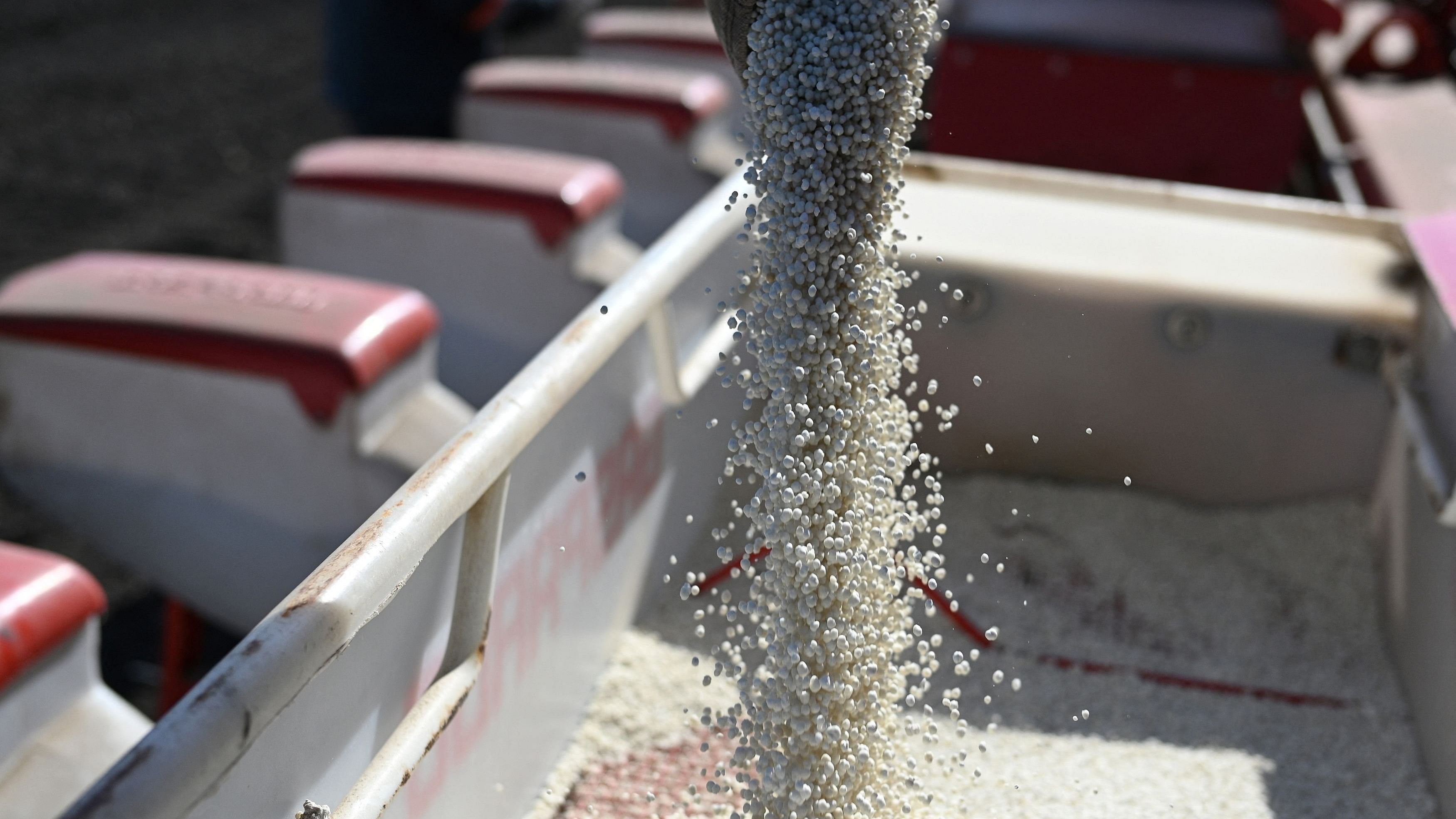
Fertiliser is loaded into a seeder
Credit: Reuters
Bengaluru: Intense farming practices is the biggest contributor to "unprecedented growth" nitrous oxide (N2O) emission, a gas whose global warming potential is 300 times more than carbon dioxide (CO2), with China and India among the leading contributors.
Scientists have noted that N2O, known as 'laughing gas', has higher potential to trap heat compared with CO2. Its lifetime is over 120 years, much longer than 12 year lifetime of methane, another gas 80 times more harmful than CO2.
The Global Nitrous Oxide Budget (1980-2020), authored by 58 researchers from 15 countries, looked into the N20 emissions by considering all quantifiable sources, sinks and perturbations and grouped them into six categories.
Excess nitrogen leads to soil, water and air pollution, in turn affecting human health and wellbeing. The research showed that four decades between 1980 and 2020 saw 10 million tonnes of N20 released into the atmosphere, primarily through farming practices.
Agricultural emissions of N20 reached 8 million tonnes in 2020, a 67% increase compared to the 4.8 million tonnes released in 1980. This was tied to the rise in the use of fertilisers across the world to supply food to meet the growing demand.
Farmers used 60 million tonnes of commercial nitrogen fertilisers in 1980, which went up to 107 million tonnes in 2020. Apart from this, animal manure contributed 101 tonnes in 2020, taking the total amount of nitrogen fertiliser to 208 million tonnes in 2020.
"In the 1980s, Europe made the largest contribution to global anthropogenic N2O emissions (23.6 %), followed by China (11.6 %), South Asia (8.0 %), the USA (7.8 %), and Russia (7.3 %). During the study period, Europe and Russia had the largest decline in the share of anthropogenic N2O emissions, from 23.6 % and 7.3 % in the 1980s to 11.8 % and 4.3 % in the 2010s," respectively, it said.
In contrast, China and South Asia had the largest increase. "The rates of increase in anthropogenic emissions from China and South Asia contributed 40 % and 30 % to the global anthropogenic increase rate, respectively," the study added.
Global Carbon Project Executive Director Josep Canadell said the growth rate of atmospheric N2O was higher than any previous observed year. "(The growth is) more than 30% higher than the average rate of increase in the previous decade. While there have been some successful nitrogen reduction initiatives in different regions, we found an acceleration in the rate of nitrous oxide accumulation in the atmosphere this decade," he added.
Hanqin Tian, lead author and Boston College professor of Global Sustainability, called for more frequent assessments of N2O emissions. "This emission increase is taking place when the global greenhouse gasses should be rapidly declining towards net zero emissions if we have any chances to avoid the worst effects of climate change," he added.
Researchers said the N2O fluxes from atmospheric CO2, mature forest conversion and biomass burning were poorly understood and quantified. An improved inventory of sources and sinks will be required if progress is going to be made toward the objectives of the Paris Agreement.